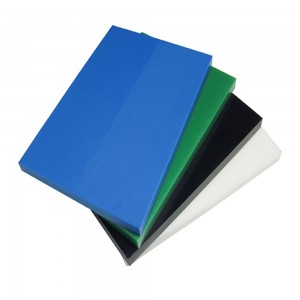Many people's first reaction to evaluating materials is simply, "This material isn't impact-resistant." But if you actually ask, "So what exactly is impact performance? Why are polymers impact-resistant?" most people can't answer.
Some say it's the large molecular weight, some say it's the flexibility of the chain segments, some say it's the addition of toughening agents. All of these are correct, but they're all just superficial. To truly understand impact performance, you must first understand one thing: impact isn't a number, but rather the material's ability to "distribute energy" in a very short time.
01 The Essence of Impact Performance
Many people, upon hearing "impact resistance," immediately think of "toughness." But what exactly is toughness? Simply put, it's whether a material can effectively dissipate energy when it's impacted.
If the energy can be dispersed smoothly, the material is "tough"; if the energy is concentrated at a single point, it's "brittle."
So how do polymers dissipate energy? Mainly through three pathways:
• Chain segment movement: When an external force strikes, the molecular chains dissipate energy through internal rotation, bending, and sliding. The molecular chains can "dodge," bend, and slide;
• Micro-area deformation: Like rubber, rubber particles induce crazing in the matrix, absorbing impact energy. The internal phase structure can deform and then recover;
• Crack deflection and energy absorption mechanisms: The internal structure of the material (such as phase interfaces and fillers) makes the crack propagation path tortuous, delaying fracture. In simpler terms, the crack doesn't run in a straight line but is disrupted, deflected, and passively neutralized by the internal structure.
You see, impact strength isn't actually "strength to withstand breakage," but rather "the ability to dissipate energy by redirecting it."
This also explains a common phenomenon: some materials have incredibly high tensile strength and shatter easily upon impact; for example, engineering plastics like PS, PMMA, and PLA.
Other materials, while having moderate strength, can withstand impact. The reason is that the former have nowhere to "dissipate energy," while the latter "dissipate energy." Examples include the sheets and rods of PA, PP, and ABS materials.
From a microscopic perspective, when an external force strikes instantaneously, the system experiences an extremely high strain rate, so short that even the molecules cannot "react" in time.
At this point, metals disperse energy through slippage, ceramics release energy through cracking, while polymers absorb the impact through chain segment movement, dynamic hydrogen bond breaking, and coordinated deformation of crystalline and amorphous regions.
If the molecular chains have sufficient mobility to adjust their posture and rearrange themselves in time, distributing energy effectively, then the impact performance is good. Conversely, if the system is too rigid—chain segment movement is restricted, crystallinity is too high, and the glass transition temperature is too high—when external force arrives, all the energy is concentrated on a single point, and the crack propagates directly.
Therefore, the essence of impact performance is not "hardness" or "strength," but rather the material's ability to redistribute and dissipate energy in a very short time.
02 Notched vs. Unnotched: Not One Test, But Two Failure Mechanisms
The "impact strength" we usually talk about actually has two types:
• Unnotched impact: Examines the material's "overall energy dissipation capacity";
• Notched impact: Examines the "resistance of the crack tip."
Unnotched impact measures the material's overall ability to absorb and dissipate impact energy. It measures whether the material can absorb energy through molecular chain slippage, crystalline yielding, and rubber-phase deformation from the moment it is subjected to force until fracture. Therefore, a high unnotched impact score often indicates a flexible, compatible system with good energy dispersion.
Notched impact testing measures a material's resistance to crack propagation under stress concentration conditions. You can think of it as the "system's tolerance to crack propagation." If intermolecular interactions are strong and chain segments can rearrange rapidly, crack propagation will be "slowed down" or "passivated."
Therefore, materials with high notched impact resistance often have strong interfacial interactions or energy dissipation mechanisms, such as hydrogen bonds between ester bonds in polycarbonate, or interfacial debonding and creasing in rubber toughening systems.
This is also why some materials (such as PP, PA, ABS, and PC) perform well in unnotched impact testing but show a significant decrease in notched impact resistance, indicating that their microscopic energy dissipation mechanisms fail to function effectively under stress concentration conditions.
03 Why are some materials impact-resistant?
To understand this, we need to look at the molecular level. A polymer material's impact resistance is supported by three fundamental factors:
1. Chain segments have degrees of freedom:
For example, in PE (UHMWPE, HDPE), TPU, and certain flexible PCs, chain segments can dissipate energy through conformational changes under impact. This essentially stems from the energy absorption by intramolecular movements such as the stretching, bending, and twisting of chemical bonds.
2. Phase structure has a buffering mechanism: Systems like HIPS, ABS, and PA/EPDM contain soft phases or interfaces. Upon impact, the interfaces first absorb energy, debond, and then recombine.Like boxing gloves—the gloves don't increase strength, but they prolong the stress time and reduce peak stress.
3. Intermolecular "stickiness": Some systems contain hydrogen bonds, π–π interactions, and even dipole interactions. These weak interactions "sacrifice" themselves to absorb energy upon impact, and then slowly recover.
Therefore, you'll find that some polymers with polar groups (such as PA and PC) generate significant heat after impact—that's due to the "frictional heat" generated by electrons and molecules.
Simply put, the common characteristic of impact-resistant materials is that they redistribute energy quickly enough and don't collapse all at once.
BEYOND's UHMWPE and HDPE sheets are engineering plastic Products with excellent impact resistance. As a primary material in the mining machinery and engineering transportation industries, they have replaced carbon steel and became the preferred choice for truck linings and coal bunker linings.
Their extremely strong impact resistance protects them from impacts from hard materials such as coal, safeguarding transportation equipment. This reduces equipment replacement cycles, thereby improving production efficiency and ensuring the safety of workers.
Post time: Nov-03-2025









